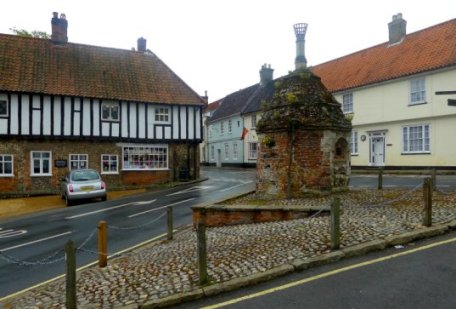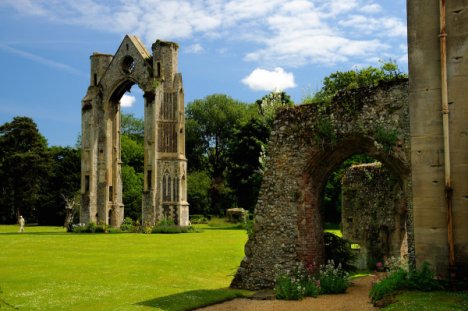
A splendid legend set in an attractive English village.
In 1061 the Lady of the Manor of Walsingham, Richeldis de Faverches, had
a vision. The Virgin Mary took her in spirit to Nazareth, and showed her
the house in which the Annunciation had occurred. She asked that a
replica of the house be built, to function as a shrine; 'Whoever seeks
my help there will not go away empty-handed.'
A simple wooden building, later encased it stone, was soon
built. Later, the son of Lady Richeldis left money for the building of a
priory at Walsingham next to what was called the ‘Holy House’. It became
a priory of the Canons regular of St Augustine.
It’s reputation grew and it rivalled Canterbury as a pilgrimage
destination. It was known particularly for families struggling to have
children. A number of English kings came here as pilgrims, including
Henry VIII.
Inevitably, along came the dissolution of the monasteries, and, along
with the Holy House, the priory was closed in 1538 and all the accumulated
relics and treasures were taken away. A sad loss was the highly revered
statue of Our Lady. The loss of the shrine caused much grief,
especially in Norfolk, where it was highly treasured. All that remains
of the priory is shown below.

A visit to
Walsingham today involves a drive and a convenient car park. In medieval
times it was far more arduous, which, of course, is how pilgrimages
should be. The most important
stopping place is what is known as the Slipper chapel, just a mile from
Walsingham. It was founded in 1325. Here, pilgrims confessed their sins,
removed their shoes, and walked barefoot to the Holy House. This place
was where the reawakening of the shrine of Walsingham began.